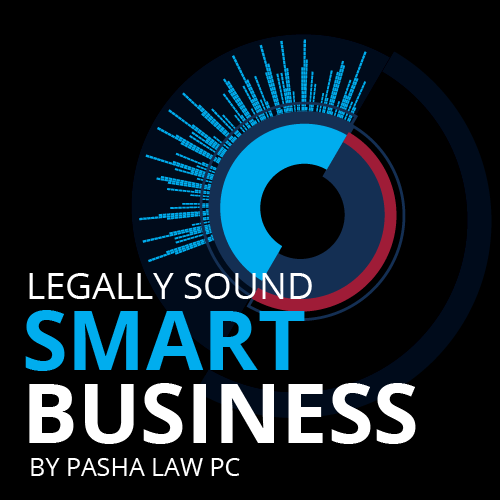There is simultaneously a lot of media buzz and some continuing popular confusion about crowdfunding. Very often, enthusiastic proponents discover that they’re not really talking about the same thing. Nonetheless, there is reason to be excited. As a source of alternative financing, crowdfunding offers considerable potential, especially with three new models emerging.
There are interesting developments, especially with regard to equity and debt crowdfunding, but it is important, first of all, to review the basics and define some terms.
Crowdfunding 101
There are essentially four different models of crowdfunding: donations, rewards-based, equity and debt. The difference is in what donors get in return in each situation.
- GoFundMe and Crowdrise.com epitomize donation crowdfunding. It’s popular with many kinds of charitable and humanitarian causes. It’s essentially like passing the hat via internet to accomplish some worthy goal, like funding the marching band’s trip to band camp. Funders get a warm, fuzzy feeling.
- Rewards based crowdfunding is used by individuals and companies seeking contributions in order to develop and launch a new product. Funders receive a token reward of a tee shirt or a DVD in addition to that warm glow.
- With equity crowdfunding, companies raise money from investors who receive shares in the company in exchange.
- With debt crowdfunding, lenders provide needed debt financing in exchange for a debt instrument that pays interest.
The latest developments have been in in the latter two models.
Federal Changes that Affect Equity Financing
The Securities Act of 1933 was enacted to protect investors from fraud and misrepresentation by requiring that entities issuing securities to the public disclose extensive financial information and register with the Securities and Exchange Commission.
Traditionally, non-accredited investors (investors earning an income of less than $200,000 and with less than $1 million dollars in assets) were not able to purchase shares from private companies but had to wait for a public offering. Recently, smaller investors have chafed at their inability to jump into the next big Google or Facebook at the earliest, riskiest and potentially most profitable stage.
The Jumpstart our Business Startups (JOBS) Act was intended, in part, to address this concern. Implementing the law required changes to securities regulations, including a rule known as Regulation A. The process has taken more than three years and has been the source of much speculation and frustration.
An expanded version of Regulation A (or Regulation A+) lets people of more modest means invest in the kinds of companies typically backed by venture capitalists and angel investors. However, the startup community has reacted coolly because the disclosure requirements are still fairly extensive.
The latest changes, effective on June 19, provide a somewhat broader, but still limited exemption to the registration and disclosure requirements imposed by the Securities Act. Many commenters still distinguish this from full-fledged equity crowdfunding.
The latest iteration of Regulation A+ allows for small public offerings of securities that do not exceed $5 million in a 12-month period. There are no reporting requirements until the company has more than $10 million in assets and more than 500 shareholders.
Regulation A+ permits two tiers of exempted filings:
- Tier 1 – Securities offerings of $20 million or less making these offerings available to both accredited and nonaccredited investors. The annual offering limit of $20 million includes $6 million on behalf of selling security holders that are affiliates of the issuer.
- Tier 2 – Exempts securities offerings of $50 million or less. Nonaccredited investors may purchase securities in Tier 2; however, they are limited to 10 percent of the greater of their annual income or net assets.
As with a registered IPO, a disclosure statement (called an “offering statement,” to distinguish it from a prospectus for a fully registered IPO or other securities offering) must be filed and cleared with the SEC. While the level of disclosure is somewhat less complicated and detailed than that for a registered offering, it is still substantial. Tier 2 offerings require audited financial statements, while Tier 1 offerings generally do not.
Advocates note that businesses will be able to advertise their offerings, sometimes described as “mini I.P.O.s,” on websites and through social media, giving fans and customers an opportunity to buy shares in private companies.
Critics reply that the newest rules are still so costly and complicated that few high-quality companies will bother to use them. They make the point that the true crowdfunding rules, which focus on internet portals, are still not fully in effect.
Meanwhile, a number of states have become restive and established their own genuine equity crowdfunding rules, complete with internet portals. The hitch is that these permit only intrastate investment.
State Equity Crowdfunding Rules
Twenty-two states and the District of Columbia have enacted equity crowdfunding rules, nine of them in the last six months. Eleven states are considering creating such laws and procedures, and three more states, Florida, Illinois and New Mexico, have rules or legislation awaiting the governor’s signature.
The intrastate restriction makes this option attractive for more populous states. In Texas, for example, that means a pool of 20 million potential investors. In Vermont, with a population of only approximately 500,000, intrastate investment means less.
In Texas, the in-state requirement is not easy to meet. Eligible companies must be organized and doing business in Texas and have their principal office there. In addition, they must have 80 percent of their gross operations in the state, at least 80 percent of their assets in the state and plan to use at least 80 percent of the revenues raised within the state.
Companies that meet these threshold requirements may raise up to $1 million within each 12-month period (including offerings by control persons). Three key points apply:
- Nonaccredited investors, who are Texas residents, may contribute up to $5,000 per offering.
- Offerings must be carried out online through a registered dealer or crowdfunding portal, and
- Issuers must submit limited disclosure to the state Securities Board
Two available portals are Crudefunders, though which Texas investors may buy their own particular piece of an oil well, and MassVenture, through which investors may speculate in real estate.
The sites are somewhat spare and, depending on your appetite for risk, may either spark enthusiastic capitalism or the urge to check for your wallet.
Debt Crowdfunding
A number of peer-to-peer debt crowdfunding sites exist, including Lending Club, Prosper, Funding Circle and Upstart. All offer relatively low interest loans to qualified small businesses unable to borrow from banks.
For investors, debt crowdfunding may be attractive because of the promise of a fixed return with relatively little risk especially if debt investments are secured by company assets. The portals must still do the same level of due diligence as they would for equity type investments. They will also have to assess the company’s ability to meet the repayment schedule to the investors.
ZipCap, a San Diego startup, offers a new and different lending model that allows loyal customers, rather than investors to participate in debt financing.
The aim is to offer small retailers like restaurants, boutiques and service providers access to low-interest loans financed by investors with a vested interest in supporting a local economy. Their pilot project targets a few carefully selected businesses in California and Michigan.
ZipCap’s borrowers start by establishing a showcase and then rallying an “Inner Circle” of customers who pledge to spend a set amount of money in a fixed period of time. ZipCap then tallies up those pledges and allows businesses to borrow against a portion of it.
To be eligible for loans, companies must have been in business for at least two years in the same location and must enroll at least 100 Inner Circle members. Participants pay ZipCap a monthly fee of either $99 or 2.5 percent of their Inner Circle transactions, whichever is lower.
Crowdfunding, in all its varieties, can open up new opportunities for small businesses on the move. The latest developments in federal equity financing rules, state equity crowdfunding laws and consumer based debt crowdfunding add to the possibilities.
None are likely to replace more traditional debt and equity models. but they add new tools that may be right for emerging entrepreneurs.


![Buyers vs. Sellers: Negotiating Mergers & Acquisitions [e319]](https://www.pashalaw.com/wp-content/uploads/2022/06/Pasha_LSSB_BuyersVsSellers_banner-1024x723.jpg)

![Will Crowdfunding and General Solicitation Change How Companies Raise Capital? [e298]](https://www.pashalaw.com/wp-content/uploads/2018/11/Will-Crowdfunding-and-General-Solicitation-Change-How-Companies-Raise-Capital-1024x543.jpg)
![How Startups Pay Employees With Limited Capital and No Profit [e264]](https://www.pashalaw.com/wp-content/uploads/2016/04/HOW-STARTUPS-PAY-EMPLOYEES-WITH-LIMITED-CAPITAL-AND-NO-PROFIT-1024x543.png)
![The Legalities Behind Running a Kickstarter Campaign [e177]](https://www.pashalaw.com/wp-content/uploads/2015/04/The-Legalities-Behind-Running-a-Kickstarter-Campaign-1024x507.png)

![SEC Compliance Issues for International Crowdfunding Site [e129] SEC Compliance Issues for International Crowdfunding Site](https://www.pashalaw.com/wp-content/uploads/2014/12/SEC-Compliance-Issues-for-International-Crowdfunding-Site1-e1418311428401.jpg)





![Law in the Digital Age: Exploring the Legal Intricacies of Artificial Intelligence [e323]](https://www.pashalaw.com/wp-content/uploads/2023/11/WhatsApp-Image-2023-11-21-at-13.24.49_4a326c9e-300x212.jpg)
![Unraveling the Workforce: Navigating the Aftermath of Mass Layoffs [e322]](https://www.pashalaw.com/wp-content/uploads/2023/07/Untitled-design-23-300x212.png)
![Return to the Office vs. Remote: What Can Employers Legally Enforce? [e321]](https://www.pashalaw.com/wp-content/uploads/2023/01/Pasha_LSSB_321_banner-300x212.jpg)
![Explaining the Hans Niemann Chess Lawsuit v. Magnus Carlsen [e320]](https://www.pashalaw.com/wp-content/uploads/2022/10/LAWYER-EXPLAINS-7-300x169.png)
![California v. Texas: Which is Better for Business? [313]](https://www.pashalaw.com/wp-content/uploads/2021/07/Pasha_LSSB_CaliforniaVSTexas-300x212.jpg)
![Buyers vs. Sellers: Negotiating Mergers & Acquisitions [e319]](https://www.pashalaw.com/wp-content/uploads/2022/06/Pasha_LSSB_BuyersVsSellers_banner-300x212.jpg)
![Employers vs. Employees: When Are Employment Restrictions Fair? [e318]](https://www.pashalaw.com/wp-content/uploads/2022/05/Pasha_LSSB_EmployeesVsEmployers_banner-1-300x212.jpg)
![Vaccine Mandates Supreme Court Rulings [E317]](https://www.pashalaw.com/wp-content/uploads/2022/02/WhatsApp-Image-2022-02-11-at-4.10.32-PM-300x212.jpeg)
![Business of Healthcare [e316]](https://www.pashalaw.com/wp-content/uploads/2021/11/Pasha_LSSB_BusinessofHealthcare_banner-300x212.jpg)
![Social Media and the Law [e315]](https://www.pashalaw.com/wp-content/uploads/2021/10/WhatsApp-Image-2021-10-06-at-1.43.08-PM-300x212.jpeg)
![Defining NDA Boundaries: When does it go too far? [e314]](https://www.pashalaw.com/wp-content/uploads/2021/09/Pasha_LSSB_NDA_WordPress-2-300x212.jpg)
![More Than a Mistake: Business Blunders to Avoid [312] Top Five Business Blunders](https://www.pashalaw.com/wp-content/uploads/2021/06/Pasha_LSSB_Blunders_WP-1-300x212.jpg)
![Is There a Right Way to Fire an Employee? We Ask the Experts [311]](https://www.pashalaw.com/wp-content/uploads/2021/02/Pasha_LSSB_FireAnEmployee_Website-300x200.jpg)
![The New Frontier: Navigating Business Law During a Pandemic [310]](https://www.pashalaw.com/wp-content/uploads/2020/12/Pasha_LSSB_Epidsode308_Covid_Web-1-300x200.jpg)
![Wrap Up | Behind the Buy [8/8] [309]](https://www.pashalaw.com/wp-content/uploads/2020/11/Pasha_BehindTheBuy_Episode8-300x200.jpg)
![Is it all over? | Behind the Buy [7/8] [308]](https://www.pashalaw.com/wp-content/uploads/2020/09/iStock-1153248856-overlay-scaled-300x200.jpg)
![Fight for Your [Trademark] Rights | Behind the Buy [6/8] [307]](https://www.pashalaw.com/wp-content/uploads/2020/07/Fight-for-your-trademark-right-300x200.jpg)
![They Let It Slip | Behind the Buy [5/8] [306]](https://www.pashalaw.com/wp-content/uploads/2020/06/Behind-the-buy-they-let-it-slip-300x200.jpg)
![Mo’ Investigation Mo’ Problems | Behind the Buy [4/8] [305]](https://www.pashalaw.com/wp-content/uploads/2020/05/interrobang-1-scaled-300x200.jpg)
![Broker or Joker | Behind the Buy [3/8] [304] Behind the buy - Broker or Joker](https://www.pashalaw.com/wp-content/uploads/2020/04/Joker-or-Broker-1-300x185.jpg)
![Intentions Are Nothing Without a Signature | Behind the Buy [2/8] [303]](https://www.pashalaw.com/wp-content/uploads/2020/04/intentions-are-nothing-without-a-signature-300x185.jpg)
![From First Steps to Final Signatures | Behind the Buy [1/8] [302]](https://www.pashalaw.com/wp-content/uploads/2020/04/first-steps-to-final-signatures-300x185.jpg)
![The Dark-side of GrubHub’s (and others’) Relationship with Restaurants [e301]](https://www.pashalaw.com/wp-content/uploads/2015/04/When-Competition-Goes-Too-Far-Ice-Cream-Truck-Edition-300x201.jpg)
![Ultimate Legal Breakdown of Internet Law & the Subscription Business Model [e300]](https://www.pashalaw.com/wp-content/uploads/2019/05/Ultimate-Legal-Breakdown-of-Internet-Law-the-Subscription-Business-Model-300x196.jpg)
![Why the Business Buying Process is Like a Wedding?: A Legal Guide [e299]](https://www.pashalaw.com/wp-content/uploads/2019/03/futura-300x169.jpg)
![Will Crowdfunding and General Solicitation Change How Companies Raise Capital? [e298]](https://www.pashalaw.com/wp-content/uploads/2018/11/Will-Crowdfunding-and-General-Solicitation-Change-How-Companies-Raise-Capital-300x159.jpg)
![Pirates, Pilots, and Passwords: Flight Sim Labs Navigates Legal Issues (w/ Marc Hoag as Guest) [e297]](https://www.pashalaw.com/wp-content/uploads/2018/07/flight-sim-labs-300x159.jpg)
![Facebook, Zuckerberg, and the Data Privacy Dilemma [e296] User data, data breach photo by Pete Souza)](https://www.pashalaw.com/wp-content/uploads/2018/04/data-300x159.jpg)
![What To Do When Your Business Is Raided By ICE [e295] I.C.E Raids business](https://www.pashalaw.com/wp-content/uploads/2018/02/ice-cover-300x159.jpg)
![General Contractors & Subcontractors in California – What you need to know [e294]](https://www.pashalaw.com/wp-content/uploads/2018/01/iStock-666960952-300x200.jpg)
![Mattress Giants v. Sleepoplis: The War On Getting You To Bed [e293]](https://www.pashalaw.com/wp-content/uploads/2017/12/sleepopolis-300x159.jpg)
![The Harassment Watershed [e292]](https://www.pashalaw.com/wp-content/uploads/2017/12/me-2-300x219.jpg)
![Investing and Immigrating to the United States: The EB-5 Green Card [e291]](https://www.pashalaw.com/wp-content/uploads/2012/12/eb-5-investment-visa-program-300x159.jpg)
![Responding to a Government Requests (Inquiries, Warrants, etc.) [e290] How to respond to government requests, inquiries, warrants and investigation](https://www.pashalaw.com/wp-content/uploads/2017/10/iStock_57303576_LARGE-300x200.jpg)
![Ultimate Legal Breakdown: Employee Dress Codes [e289]](https://www.pashalaw.com/wp-content/uploads/2017/08/Ultimate-Legal-Breakdown-Template-1-300x159.jpg)
![Ultimate Legal Breakdown: Negative Online Reviews [e288]](https://www.pashalaw.com/wp-content/uploads/2017/06/Ultimate-Legal-Breakdown-Online-Reviews-1-300x159.jpg)
![Ultimate Legal Breakdown: Social Media Marketing [e287]](https://www.pashalaw.com/wp-content/uploads/2017/06/ultimate-legal-breakdown-social-media-marketing-blur-300x159.jpg)
![Ultimate Legal Breakdown: Subscription Box Businesses [e286]](https://www.pashalaw.com/wp-content/uploads/2017/03/ultimate-legal-breakdown-subscription-box-services-pasha-law-2-300x159.jpg)
![Can Companies Protect Against Foreseeable Misuse of Apps [e285]](https://www.pashalaw.com/wp-content/uploads/2017/01/iStock-505291242-300x176.jpg)
![When Using Celebrity Deaths for Brand Promotion Crosses the Line [e284]](https://www.pashalaw.com/wp-content/uploads/2017/01/celbrity-300x159.png)
![Are Employers Liable When Employees Are Accused of Racism? [e283] Racist Employee](https://www.pashalaw.com/wp-content/uploads/2016/12/Are-employers-liable-when-an-employees-are-accused-of-racism-300x159.jpg)
![How Businesses Should Handle Unpaid Bills from Clients [e282] What to do when a client won't pay.](https://www.pashalaw.com/wp-content/uploads/2016/12/How-Businesses-Should-Handle-Unpaid-Bills-to-Clients-300x159.png)
![Can Employers Implement English Only Policies Without Discriminating? [e281]](https://www.pashalaw.com/wp-content/uploads/2016/11/Can-Employers-Impliment-English-Only-Policies-Without-Discriminating-300x159.jpg)
![Why You May No Longer See Actors’ Ages on Their IMDB Page [e280]](https://www.pashalaw.com/wp-content/uploads/2016/10/IMDB-AGE2-300x159.jpg)
![Airbnb’s Discrimination Problem and How Businesses Can Relate [e279]](https://www.pashalaw.com/wp-content/uploads/2016/09/airbnb-300x159.jpg)
![What To Do When Your Amazon Account Gets Suspended [e278]](https://www.pashalaw.com/wp-content/uploads/2016/09/What-To-Do-When-Your-Amazon-Account-Gets-Suspended-1-300x200.jpg)
![How Independent Artists Reacted to Fashion Mogul Zara’s Alleged Infringement [e277]](https://www.pashalaw.com/wp-content/uploads/2016/08/How-Independent-Artists-Reacted-to-Fashion-Mogul-Zaras-Alleged-Infringement--300x159.jpg)
![Can Brave’s Ad Replacing Software Defeat Newspapers and Copyright Law? [e276]](https://www.pashalaw.com/wp-content/uploads/2016/08/Can-Braves-Ad-Replacing-Software-Defeat-Newspapers-and-Copyright-Law-300x159.jpg)
![Why The Roger Ailes Sexual Harassment Lawsuit Is Far From Normal [e275]](https://www.pashalaw.com/wp-content/uploads/2016/07/WHY-THE-ROGER-AILES-SEXUAL-HARASSMENT-LAWSUIT-IS-FAR-FROM-NORMAL-300x159.jpeg)
![How Starbucks Turned Coveted Employer to Employee Complaints [e274]](https://www.pashalaw.com/wp-content/uploads/2016/07/iStock_54169990_LARGE-300x210.jpg)
